Do you know what drain tile is? Do you know how drain tiles prevent water from pooling up inside and outside of your home? We will explain all of that and more in this article. So follow along with a beginner’s guide to interior & exterior drain tile systems.
What Is A Drain Tile System?
Also known as a footing tile system, a drain tile system contains perforated pipes that gather groundwater and direct it away from your home’s basement and foundation walls. You don’t want water seeping through cracks or the cove joint (where the floor meets the wall).
There are two types of drain tile systems: interior and exterior. An interior drain tile system prevents moisture from building up in the soil under and around the foundation. When the soil doesn’t have excess water in it…it can’t get into the basement. Exterior drain tile systems might also use a sump pump if gravity isn’t able to channel the water away from the foundation.
Waterproofing a basement should be one of your biggest priorities, and drain tile is a guaranteed lasting solution. Combined with a sump pump, vapor barrier, and other waterproofing solutions, you can keep water out of your basement for good!
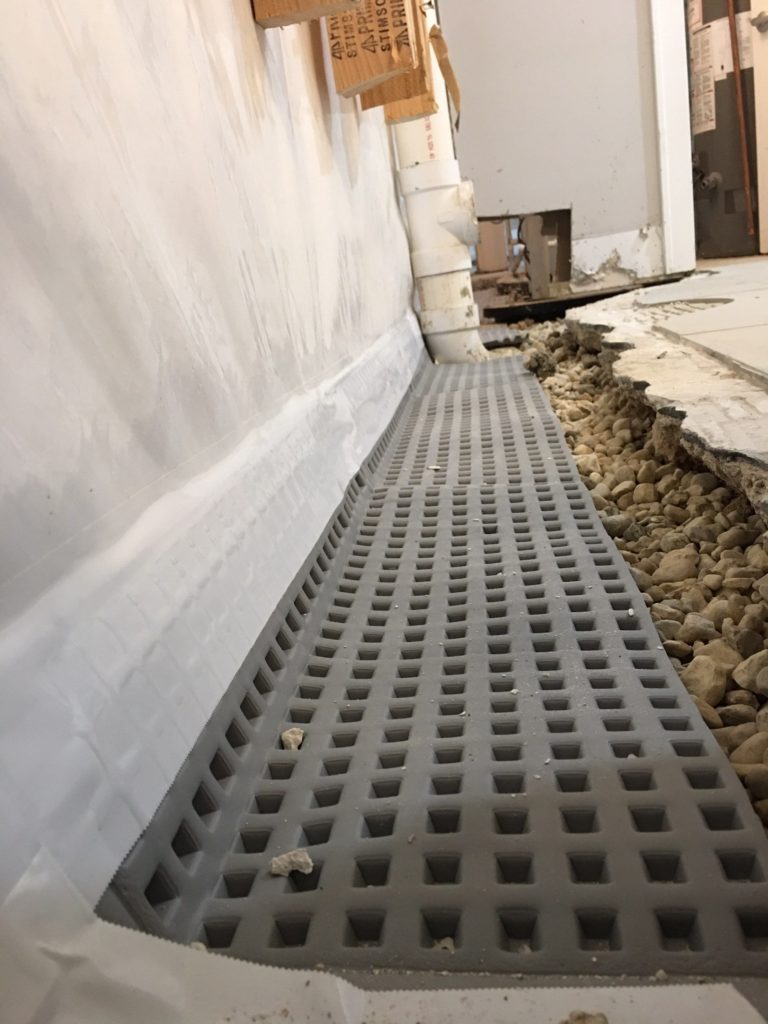
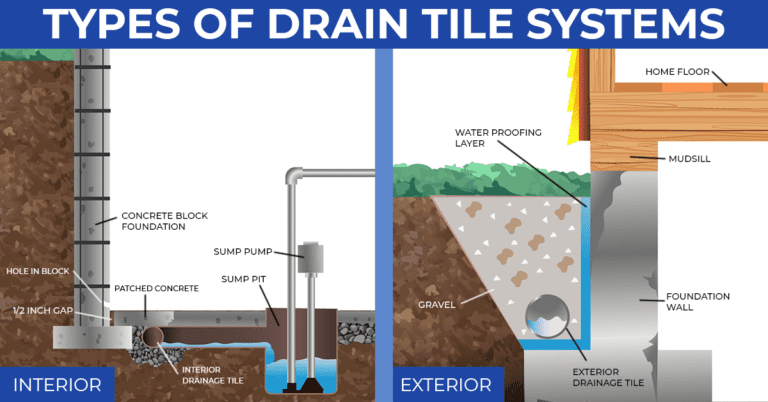
Benefits Of A Drain Tile System
Many homeowners choose to install an interior drainage system because the construction process is quick and easy. Contractors jackhammer the floor, install the system, and replace the floor in a matter of days. You can easily access an interior drainage system if necessary, but it will usually never clog.
How Are Drain Tile Systems Installed?
To install an exterior drain tile system, a trained professional must dig up the area around the foundation, clearing away plants, sidewalks, and other obstacles. Thus, the construction process can last longer than an interior drain tile system installation—but it won’t disrupt your home’s interior.
Another benefit of doing the exterior drain tile is that you do not need to remove or touch anything in the basement. Save for the installation of a sump pump, all of the work is performed outside the home. So, if you have a beautifully finished basement, it need not be touched to complete the basement waterproofing system.
Read more about – Are Floor Cracks Normal?
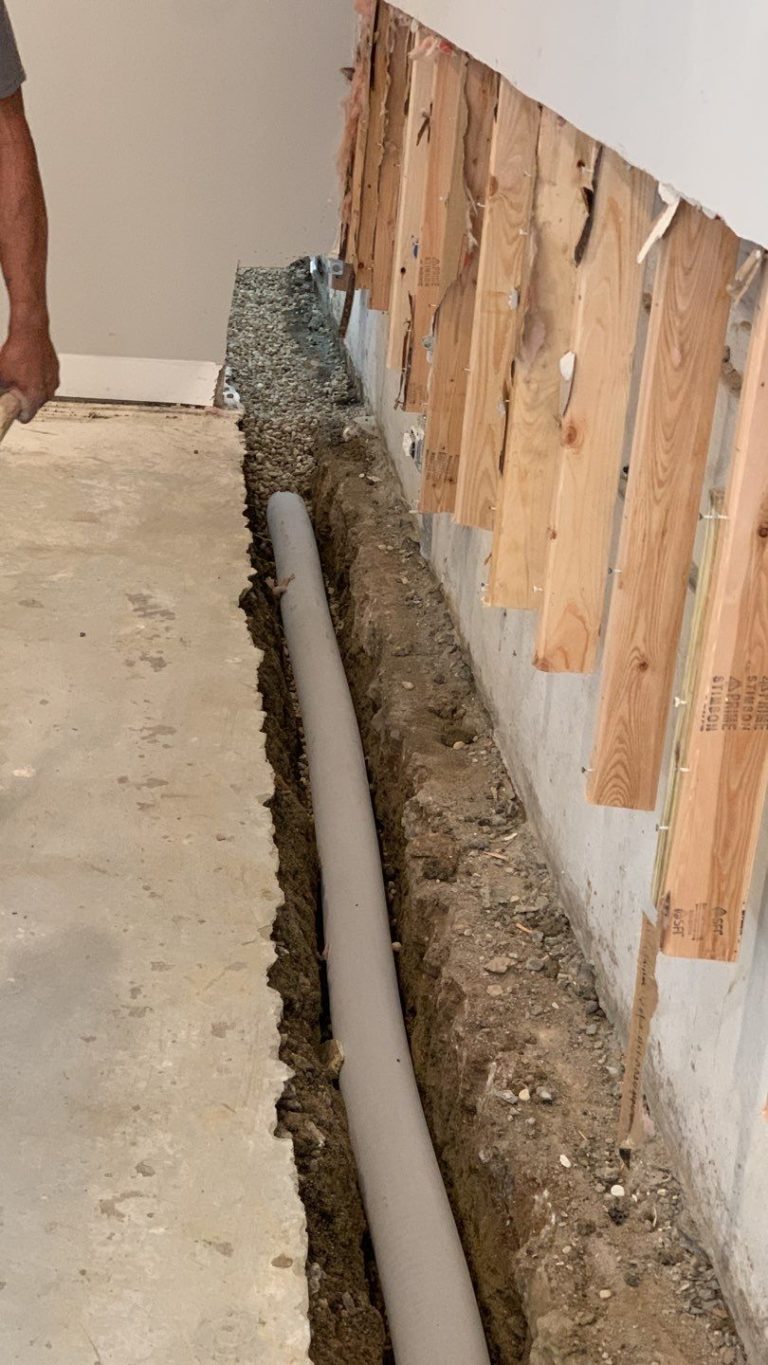
Hydrostatic Pressure
To understand what drain tile prevents, you’ve got to learn what hydrostatic pressure is. As water gathers around your foundation, it builds up and causes pressure. An interior drain tile system collects the water and prevents the pressure from building up.
Interior Drain Tile
The interior drain tile system collects water under and around your basement and directs it to your basement’s sump pit. You can install an interior system in three ways: above the concrete slab, within the slab’s edge, or below the slab.
A perforated pipe is laid in a bed of washed stone under your basement floor. As water gathers around and under your home’s foundation, this pipe gathers the water and redirects it to a sump pit. From here, the sump pump will eject the water from the basement.
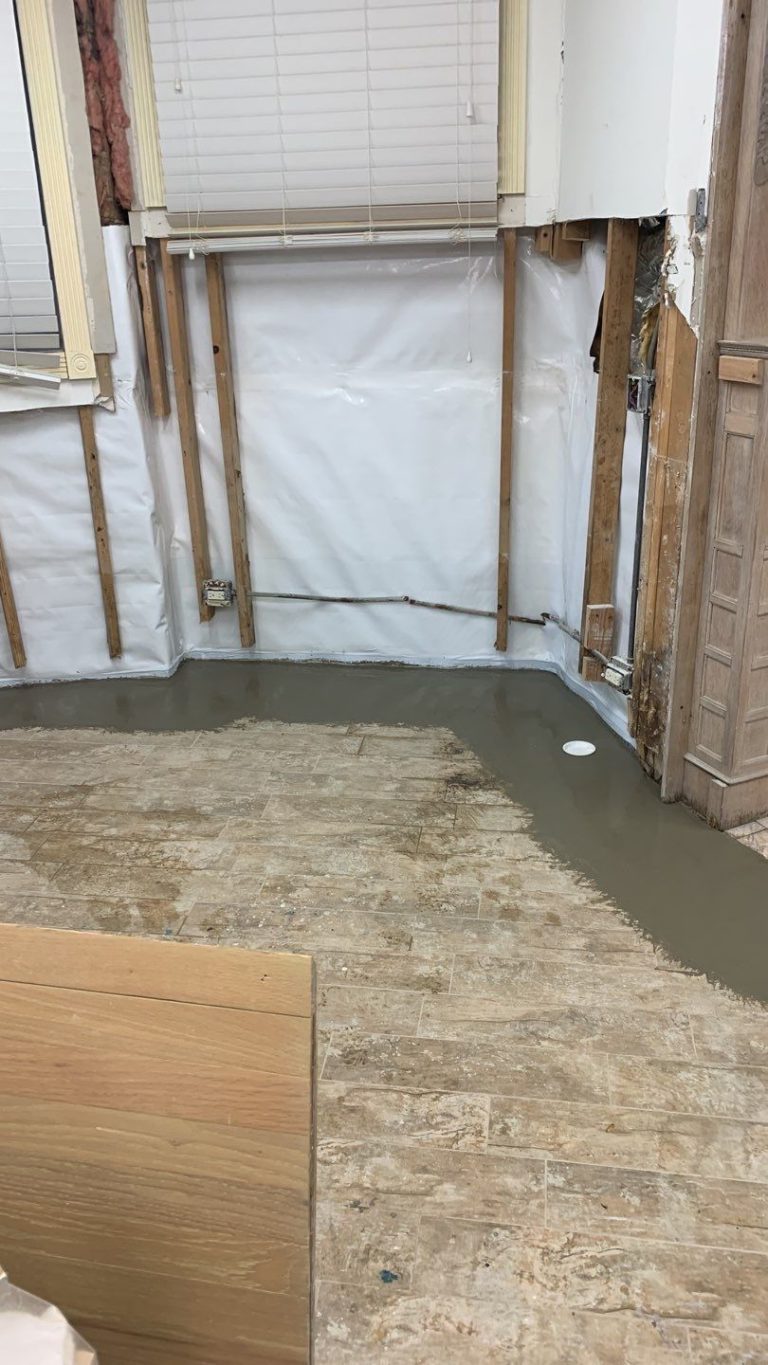
Exterior Drain Tile
An exterior drainage system directs outside water to a street’s sewer, draining the soil around your home and relieving pressure from the home’s foundation. The same mechanics are in play for this system. Water gathers in a basin around your foundation, and a gravity pipe system directs the water into a sump pump. The pump then ejects the water from the home via a discharge line.
Both systems, while they may be different in installation, accomplish the same goal. It will allow you to finish your basement, adding usable living space to your home. Mold, musty smells, and pooling water will no longer be worries of yours.
Other Waterproofing Solutions
Other waterproofing solutions combined with drain tile create the ultimate water seal.
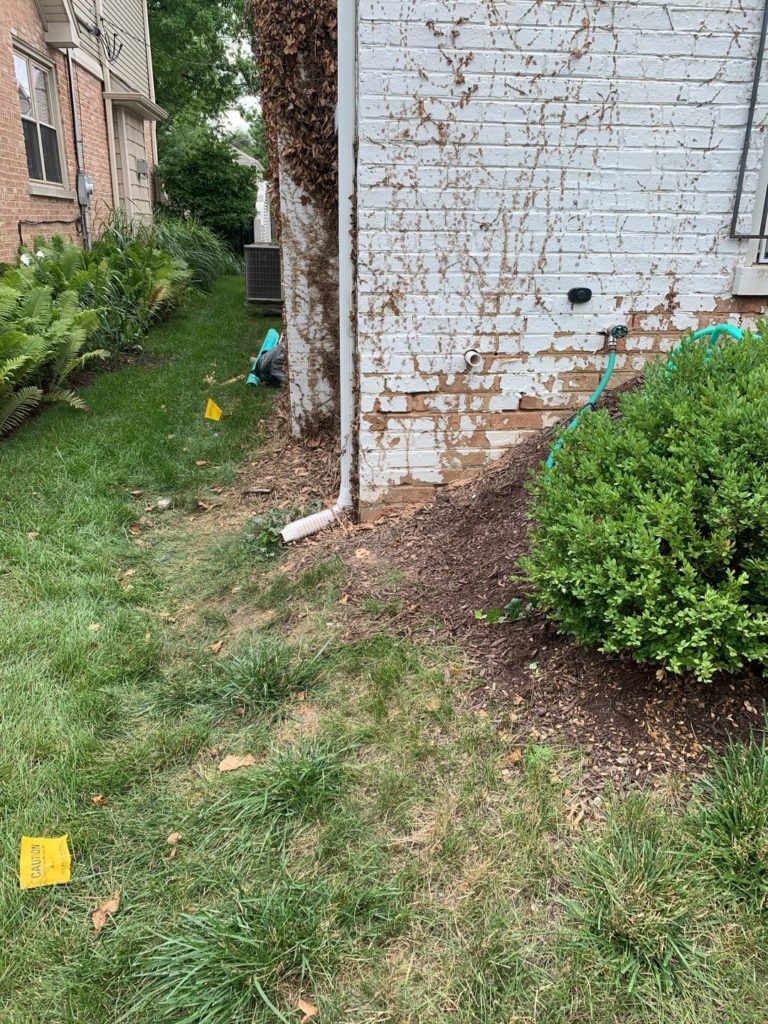
- Vapor Barriers (Moisture Barrier) – A vapor barrier is typically polyurethane sheeting added to basement walls. Vapor barriers prevent moisture penetration through the walls and this hampers mold growth.
- Sump Pump – A sump pump is a fixture that sits in a home’s basement or crawlspace. It helps remove groundwater from underneath your home, preventing water from seeping through your floor and walls. Without a sump pump, water or heavy precipitation could become a significant issue for a basement foundation.
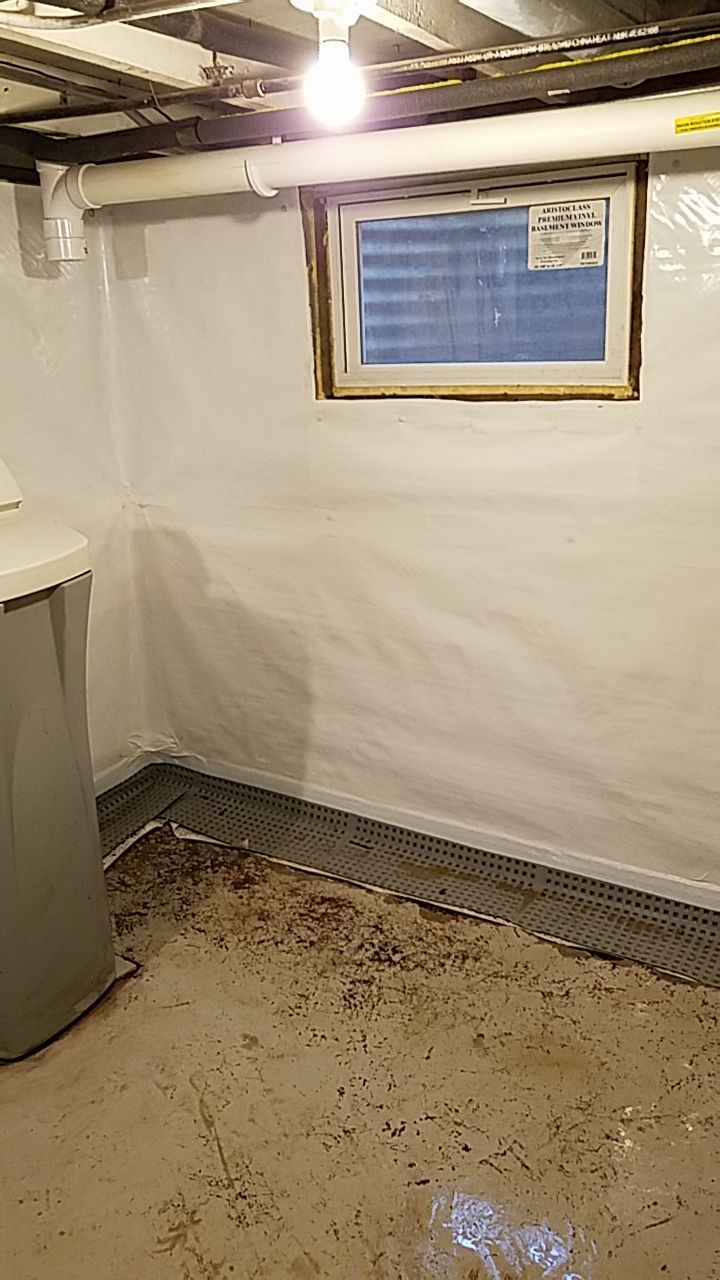
- French Drain – A French drain is a perforated pipe placed just below the surface of the soil to promote water drainage. Learn more about how French drains work.
- Gutter/Downspout Extensions – Gutter extensions are highly recommended for the average home in America. Instead of water from your gutters pouring directly at the base of your home/foundation, these extensions channel the water further away (at least 20ft) from your home.
- Discharge Line – A discharge line is used along with the sump pump to carry water from the pump to the outside of the house. In a basement waterproofing system, sump pump discharge lines have several essential factors: Just like gutter extensions, discharge lines should carry the collected water at least 20ft away from the foundation, spaced out from each other to avoid the water pooling up in your yard.
Who To Call For Drain Tile Systems
Undoubtedly, both types of drainage systems are effective waterproofing solutions, and they each have their benefits. However, if you plan to install a drain tile system, you should always leave the work to the professionals. If you want to prevent basement flooding, don’t hesitate to contact our experienced team. The Real Seal offers incomparable basement waterproofing services throughout Chicago, and both drainage systems come with a Fully Transferable Lifetime Warranty. Schedule an appointment online, or call for a free consultation!
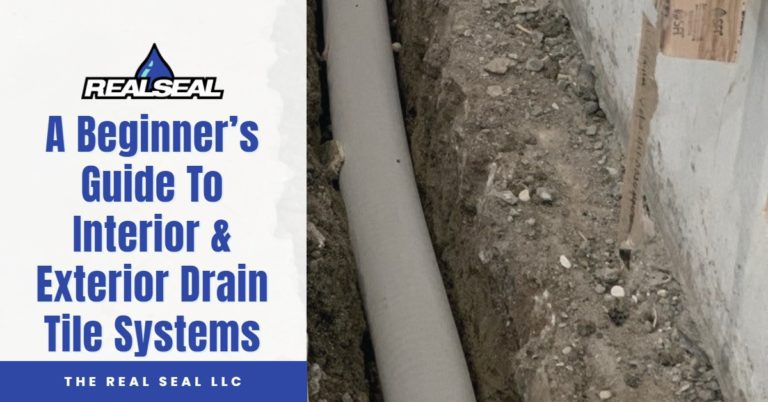
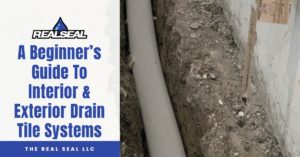
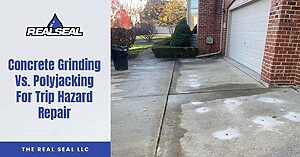
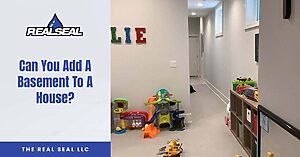
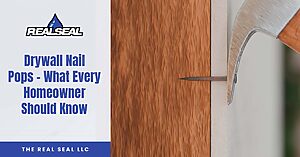
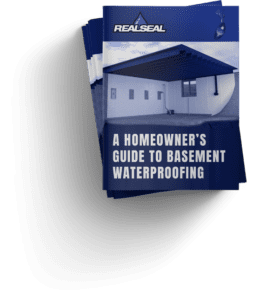

35 Responses
Very Informative Blogs. Excellent Work.
Thank you!
Good information. Do you know anybody in the central Florida area that does interior drain tile installation?
Hi Linda!
Thanks! Unfortunately, we do not currently know anyone to refer in Florida for Drain Tile work. The best way we would recommend going about finding someone is cross-referencing a few local names against review sites such as Angie’s, BBB, and Google. If the company shows a common reputation throughout all those sites, they are a good bet.
I like that you mentioned how waterproofing a basement should be one of our biggest priorities, and drain tile is a guaranteed lasting solution. Our house is a bit old now, so we are thinking of doing some improvements to it. Having an exterior drain tile system sounds like a good idea, so we should probably ask some experts for it.
Very Informative Blogs. Excellent Work keep it up.
Thanks so much!
Austin, thanks for all the info above! I’ve heard that exterior systems drain tile systems tend to clog after just a few years. Do you have any feedback or advice on that? We’re in Oregon and looking waterproof a 1941 poured concrete foundation so we can finish out the basement. Thanks!
Hi Jake!
The old way they used to do Exterior Drain Tiles absolutely clog up after a few years. However, new techniques and technologies allow us to put Lifetime Warranties on our Exterior Drain Tile Systems.
Main reasons for this include:
Solid Perforated Pipe as opposed to Corrugated or Clay pipe that used to be used
Drain Tile is now covered with a debris filter sock in order to filter out debris
Drain Tile is now buried in a thick bed of gravel in order to help further prevent debris from entering the line
Landscape fabric is used to cover the bed of gravel to further prevent debris from entering the line
The link below is to our YouTube How We Do It video for this service. It shows a project we recently completed, step by step, with explanation.
https://youtu.be/wNAXvA6ana4?si=qyWxqm60ffh09eRE
Hope this helps!
Can the interior drain be done in a home with an already finished basement without having to reframe?
Not if you want it done correctly. There are companies that will do it your way, but it will cause many issues. If you had a company suggest that you do this, RUN!!!
First off, they cannot get the concrete over the Drain Tile and under the framing all the way. This will leave gaps that will allow humidity up behind the finished wall, causing mold and other issues.
Secondly, it tends to be messy, harder to install, and the crews that install this will tend to cut corners. Especially as not removing the frame is cutting a corner to begin with. So do not expect a full and complete system.
And lastly, it becomes difficult to grade the Drain Tile, get a proper Cove Joint system in, and many times you have to end up calling the proper contractor to do it the right way in the end anyway.
I understand it’s scary and can be overwhelming to think about having someone in to re-do the framing and drywall. If you think that’s overwhelming, imagine doing it the wrong way, having to cut it all out anyway, extending the job by months, and then paying over double to have someone re-do the whole thing. It will be a whole lot less hassle, money, and stress to do it right the first time.
Company that gave me a quote on said they would cut out the bottom 3 feet of an already existing finished basement. All the walls would have to be taken down and then reframed to accomplish this?
Hi Glen,
Not all the walls, just the bottom 3 feet. Your framing SHOULD be fastened to the joists above, allowing them to essentially hang while the work is being done and the drywall/framing is then replaced.
Besides, if you have water in your finished basement, you WANT that last 3 feet of drywall removed, because it is highly likely that you have mold behind there. More sensitive people with allergies will notice it first, but it will affect everyone’s health.
Very Informative Articles regarding Interior & Exterior Drain Tile Systems. Outstanding
Thank you so much!
Does an interior drain tile inserted below the surface of the grade of the poured concrete floor in a basement with a sump pump drain water and moisture from the center of the basement concrete floor? (my area rug has stuck to the floor in the center of the basement, moisture from the concrete floor is never wet, but has moisture enough to make a rug stick to it.)
HI Eric,
Great question! As long as you complete the system fully around the perimeter, then yes, it will keep the water from coming up from the middle of the floor. If you only do a partial system (anything less than a full perimeter system), it will not be able to handle the middle of the basement.
Follow-up: My house and foundation are built into the side of a steep hill. 3 of the 4 walls are block and will have the complete perimeter of the block wall covered with a drain tile system. The 4th wall is a walkout basement wall made of wood studs because it is entirely at grade. By our state/county codes, we are not allowed to install a drain tile system under the wood stud walls. Because the basement is over 1850 square feet, we are splitting the system into two sump pumps systems on opposite ends of the basement dead ending at the corners at ground level near the studs. (like the open ends of a U shape). This allows the runs to each be under 160′ of continuous drainage (both just over 100′ now). Both contractors offering bids were worried about drain lines over 130/140′ or more continuous drainage.
I should think 2 sump pumps at opposite ends of the open U shape should be able to keep up with water at the center of the basement slab/floor?
Thanks Eric
Hi Eric,
You painted a very detailed picture, thank you! To start, you should have no singular run of Drain Tile to a Sump Pit over 80′ in length. This is because the Drain Tile needs to slope/grade down, just like any other pipe that moves water, and if you run it too far, it will go too far beneath the footing. This can cause problems in the future.
Your better bet would be to put the 2 sump pits in the corners opposite to the walk-out corners. This will allow the system to be split up into more manageable runs, keeping the Drain Tile even with your footing. Those Sump Pits should each have a Primary Sump Pump as well as a Battery Backup Sump Pump (total of 2 pumps per pit) in order to effectively handle the water and protect you in heavy storms or power outages.
We are interested in buying a home. It was built in the 90s. Homeowner says it doesn’t have drain tile but it has a sump pump. I thought the purpose of the sump pump was to evacuate water that seeped into the drain tile system. Am I wrong? Does the sump pump keep the basement dry without the drain tile?
Hi Rebecca!
You are correct, a sump pump is meant to discharge water out of the basement, but it does not always have a Drain Tile with it, especially older homes where the code wasn’t up to par to what it is today.
Many basements were built with just sump pumps. It may be necessary to install a Drain Tile in order to assure that basement stays dry. A pump will not keep an entire basement dry without a drainage tile.
Great read Austin. May be a silly question, but can an existing exterior drain tile (currently routed to my sump pit) be redirected to the city storm sewer? My pumps run year round and tired of replacing them every few years.
Hi Noah,
It is possible depending on the grading of your yard and location of the sewer. The problem with connecting to the city sewer directly at depth is if the sewer backs up, the system works opposite and will flood your basement.
The article is very informative and well written.
Thank you!
Would you suggest using schedule 35 PVC Perforated Drainage pipe for an inside footer drain or regular perforated PVC drainage pipe ?
Hi Jack!
Either Corrugated or PVC Drain Tile will work. Code is different city to city, but both systems work just as effectively and will come with the same Lifetime Warranty.
Austin I have water coming up from the basement floor in 2 areas within 5 feet of one another. The floor is tiled. (Water is coming up in two interior doorways.)A basement waterproofing company has come out and given me a detailed quote. They want to put in an interior floor drain along the wall and a sump pump in the areas affected. All of that makes sense. What concerns me is my basement is tiled throughout. Not the stick on tiles either. Fully grouted. I am told they need to dig 6-12 inches away from the walls where the drain system will be installed. So I assume the vibrations of the jackhammer to dig will cause cracking in and around the exterior tiles. This is my dilemma. That is a cost that I cannot afford right now. Am I wrong about the surrounding tiles cracking and how far into the finished basement could they crack. Suggestions on other options or is this the risk to get the system in.
Hi Kathy!
Great question. Although there is certainly a chance of cracking in tile in your basement during the Drain Tile installation with jackhammers, it is not as severe as you would think. We rarely have tiles cracking outside of our work area. The obvious exception is if they didn’t grout the tiles well.
There is no other good way to stop groundwater seepage from a basement other than Drain Tile. But as far as the cost goes, it will be more expensive to let the problem get worse and then have to replace a lot of interior finishings due to water/mold damage than it would be to take care of it now.
Hi Austin,
Very informative- thank you! Can a malfunctioning of interior drain tiles in the basement cause an abundance of centipedes? We recently bought a house that has the interior tiles, and we’ve noticed A LOT of centipedes. How do we have it inspected? We don’t even know where to start or who to call. Any recommendations for me in Michigan? Thanks for your help!
Hi Reb!
Best bet is to get a pest company out there. Moisture can create a nice environment for centipedes, but I have not yet seen a Drain Tile cause them. If the system doesn’t leak during storms, it is likely functioning correctly and just needs a pest issue solved.
Hello Austin
We have a newly constructed cabin in the woods, in Wisconsin. the soil is gravel topped clay. The frame is mounted on (13) backfilled piers, made of concrete bricks. They are 4′ below surface and 30″ above grade. There is puddling around the perimeter of the 20×32′ building. There is also puddling under the building. We have not yet installed rain gutters but plan to. Our concern is the water table of our sight has an average constant depth of around 36″ below grade. We want to have a drained yard and protect the pier foundation from movement. What would you recommend?
Respectfully, Chuck
Hi Chuck!
Drainage is going to be very important here. With the concrete block piers only 4′ below grade, you will find the wet soil will affect the piers over time. For sure you want to get those rain gutters on as well as a French Drain around the home to move that water.
If you have a problem, it may require more or deeper piers.
Dear Austin,
We are currently in the process of finishing our basement by excavating 2 to 4 feet, depending on the original slope of the floor, undermining the existing foundation, removing the internal sump, and installing an external one. Since we are digging significantly lower than the original external drain tiles, we must either replace the existing ones or install an interior system. Installing internal drain tiles seems to be the simplest and most cost-effective solution. My questions are as follows: how can moisture be prevented from seeping through the newly formed foundation walls of the basement from the inside? Additionally, does having an external sump affect the removal of water in any way? Or would replacing the existing exterior drain tiles be a better option? We live in the Pacific Northwest, where heavy rainfall is a normal occurrence.
Best regards,
Heather
Hi Heather!
Are you doing this project yourself or having a contractor perform the work?
For an internal drainage system, you can install a wall liner/vapor barrier that will direct the water that comes between the seams of the new and old foundation into the internal drainage system.
I do not suggest or recommend an external sump pump. We ALWAYS suggest and install them on the interior. It can be affected by weather, wildlife, youths, and is not as easily maintained and checked as if it were on the inside. You should definitely consider a Battery Backup system as well.